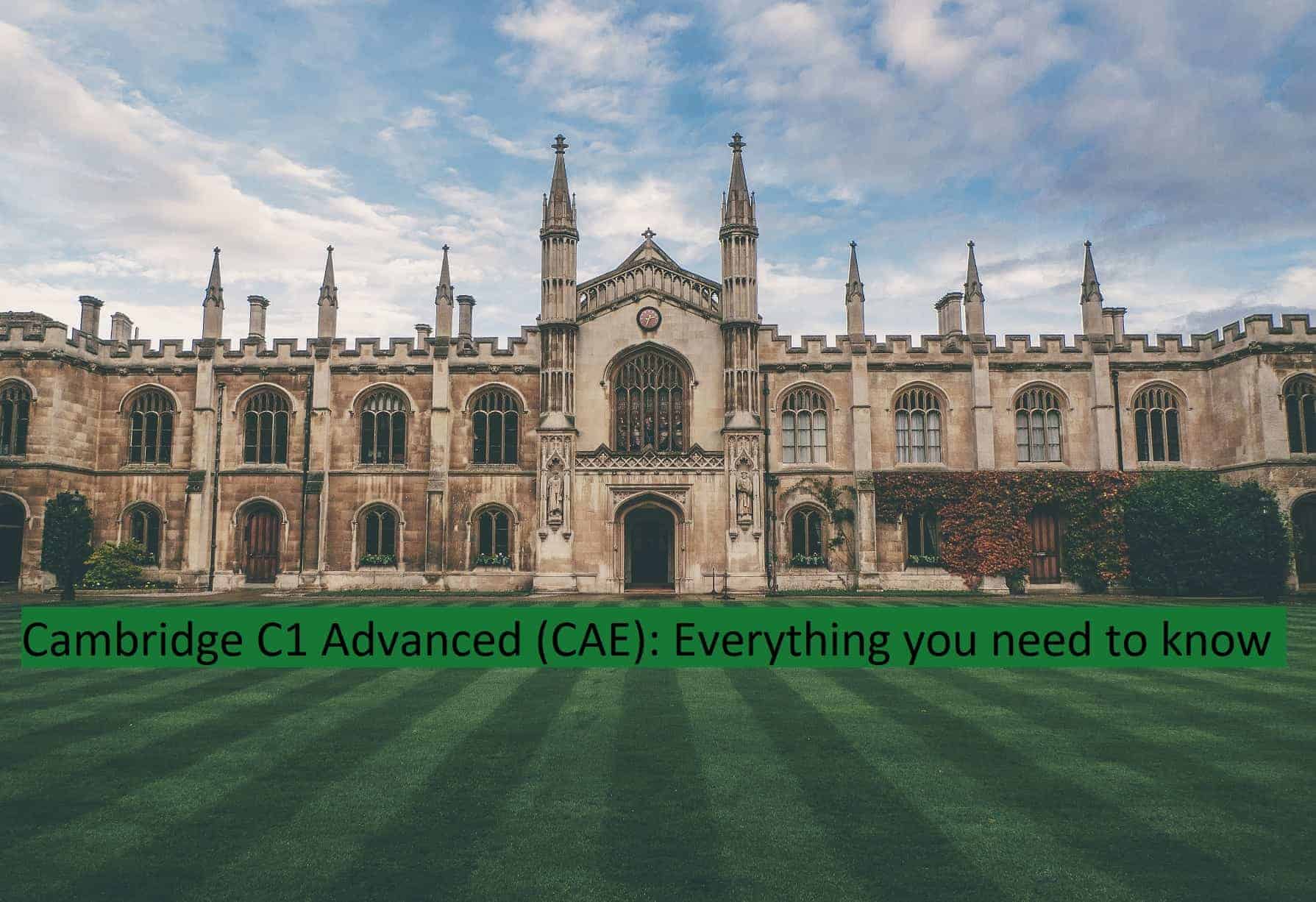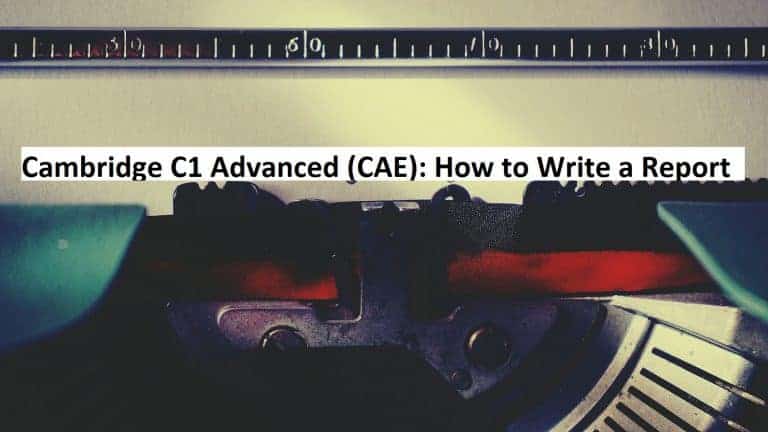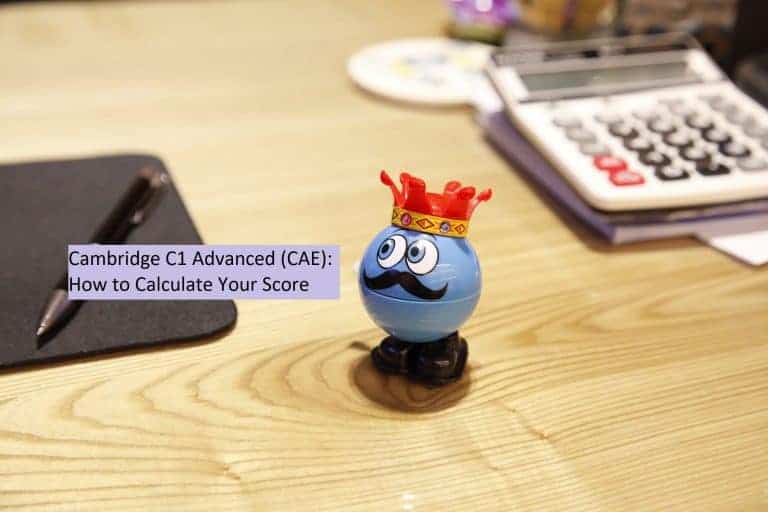Introduction
Cambridge C1 Advanced, or CAE, is an exam to check you English level. Cambridge English designs the test and many people in different countries take it every year.
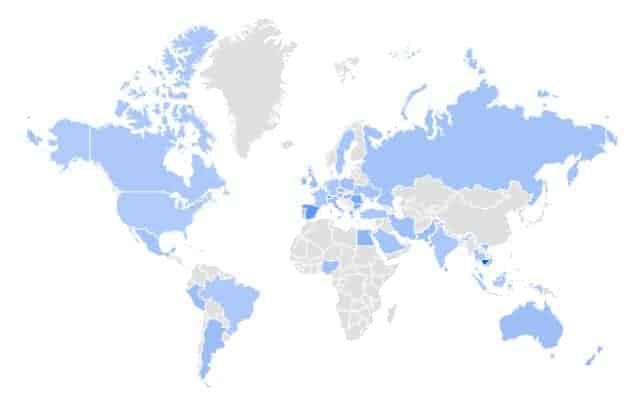
Source: Google Trends
When I moved to Spain in 2018, I saw immediately that the Advanced certificate has a great reputation and that it can be very helpful for future career opportunities and/or education. Taking an exam like B2 First or C1 Advanced enables you to take the next step in your personal growth and development.
In this article you’re going to find out what it means to pass CAE, who should and who shouldn’t take the exam, what it looks like and how you can find a place, apart from teacherphill.com, to get ready for the test. This is the perfect place for you to get started on your journey to passing C1 Advanced.
What does C1 stand for?
C1 is a level on the CEFR scale designed by the Council of Europe. CEFR is an international framework that describes different English levels and what someone at this level is able to do in that language. In short, C1 means that you are a proficient user of the language so you can pretty much communicate fluently in any context without help. First of all, though, let’s have a look at the CEFR to make everything a little bit clearer (You can click here to get more information in your language:
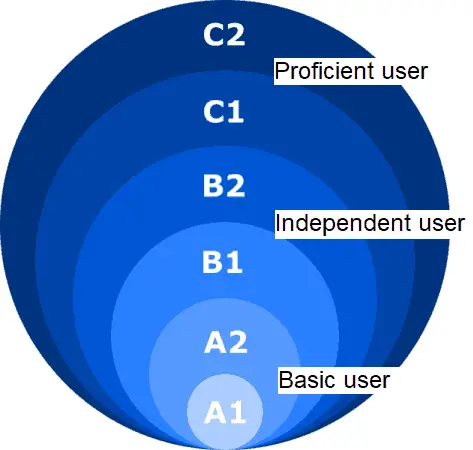
You can see that C1 is the second highest level on the scale, but it is often not clear to students what exactly C1 or C2 means and what competencies a user of English should be able to do at a given level. Luckily, the Council of Europe gives us some more detailed information:

This is a detailed description of the the different skills reading, speaking, writing and listening at level C1. If you think you can do all of these things without too many problems, you might be able to take the Cambridge C1 Advanced exam with some preparation soon. However, if you don’t think your skills are good enough, yet, you should probably wait a little longer and join classes to get you to the right level before thinking about taking the CAE exam.
Get Your Free C1 Advanced Writing Cheat Sheet Now!
Just leave your name and email address below.
Why you should take Cambridge C1 Advanced
CAE can be a very useful certificate to show that you are a proficient user of the English language. As more and more people take the lower level exam B2 First, it might be a good idea to separate yourself from the pack and go for something even more valuable like CAE. So here are some of the reasons why C1 Advanced might be the right thing to get for you.
University
Many universities all over the world accept C1 Advanced as proof of your English language abilities so if you are thinking about studying abroad, this could be a requirement. Of course, make sure to check what exactly different higher education institution ask you to provide them with before just signing up for an exam, but Cambridge English certificates are widely recognised and many schools accept CAE.
Apart from that, more and more university courses, and even those which are taught in your mother language and your home country, require you to know at least some English since it is the standard in many fields like marketing and advertising, film and music, communication, information technology and many more.
Employment
As mentioned above, there are a lot of industries in which English is the predominant language so higher abilities can open doors for you in your career, even in occupations that don’t necessarily require university-level education.
On top of that, there are so many multinationals and companies that do business abroad so English has become almost a must if you want to communicate effectively with suppliers or customers in other countries.
Finally, as more and more people recognise all these changes in our globalised world and decide to take B2 First or similar exams, you can stand out if you pass and even higher level like C1 Advanced. Don’t get me wrong, I’m not advocating for an educational arms race, but you sometimes have to do what is necessary to be seen as outstanding and CAE can be one of those tools in your toolkit.
Personal development
In our day and age information is more accessible than it has ever been and people can educate themselves to a level like never before. Part of becoming the person you want to be can be new language which enable you to communicate with people from other countries, travel the world and get to know new cultures. With CAE you have proof that you are ready to do whatever you want to go with you English and it is always a great motivation if there is something at stake, for example, passing an exam.

Why you shouldn’t take C1 Advanced
With all the good reasons that I’ve just outlined for you you are probably really motivated now and want to sign up for a course or immediately for the exam, but not so fast. There are a couple of simple points to consider that might actually change your mind deter you from taking the exam at all.
Your English level
Many people have experience with exams even before they decide to take CAE. At school, university, work or even for your driving licence you need to pass some kind of test before you get what you want. Unfortunately, it is possible to squeeze through many of those tests and barely pass, and as they say, ‘A good horse jumps only as high as it needs to’.
With Cambridge C1 Advanced this is definitely not the case. I have seen a lot of students who, after speaking to me, didn’t take my advice and ended up unhappy with their results. To pass you almost have to be too good for the level. The exam is exhausting, difficult and really tests your English level. If you are not a true C1 level English student with the right strategies, you won’t pass.
For this reason, don’t take the test if you are not sure about your level or if your teacher advises against it. It will be in your best interest.
It is simply not important enough to you
I guess that this point doesn’t apply to you. You are probably looking for information because you want or need to take an English language test for one reason or another, but there is a group of English students who really just study for pleasure and personal development (see reasons why you should take C1 Advanced above). For those people, it might be important to survive with their English when they go on holiday or, like in my parents case, be able to have a conversation with their sons partner (I’m German and she’s from Spain 🙂 ), but they don’t always want to take a test to prove to themselves how good their English level is.
I’m really fine with this kind of student because they are often more relaxed and can celebrate small achievements while people who work towards an exam can feel more under pressure and the atmosphere in class might be more tense and serious.
So, if you don’t have a specific goal in mind and just study English for your own personal development, C1 Advanced is an option, but definitely not a must.
What does the C1 Advanced exam look like?
Cambridge CAE is an exam that tests the four language skills reading, writing, listening and speaking as well as grammar and vocabulary. It is broken up in four papers which I’m going to describe below:
Reading & Use of English
In this part of the exam candidates actually go through two different papers – Reading is the first and use of English is the other. You get two separate scores for the two papers and they both count equally (20% each) towards your overall CAE score. In this part of the exam students have to show how well they can control different grammar and vocabulary and also deal with a variety of texts, for example newspaper articles, magazines or fiction.
In Reading & Use of English there are eight parts with a total of 56 questions for you to answer and you get 90 minutes to get through all the tasks. As you can see, there is not a ton of time to finish as you also have to transfer all you answers onto a separate answer sheet which the examiner gives you at the beginning of the test. Considering that, you have around 85 minutes for the actual work or around 10 1/2 minutes per section.
You have to read quite a lot (3,000-3,500 words) in a pretty short period of time so it is important that you know exactly what you are doing.
So, let’s have a quick look at the different parts of Reading & Use of English.
Part 1 – Multiple-choice cloze
A cloze is a text with gaps. You get a text with eight gaps and for each gap you need to choose from four possible options A-D.
This part tests your vocabulary, e.g. idioms, collocations, fixed phrases, complementation, phrasal verbs and semantic precision.
Part 2 – Open cloze
In Part 2 you get a text very similar to Part 1, but there are no possible answers for you to choose from. Instead, you have to analyse the text and choose the correct word for each gap by yourself.
You need to show your awareness for grammar as well as your vocabulary.
Part 3 – Word formation
Here, you have to work with another text with eight gaps, but for each gap there is a word given which you have to modify so it fits the gap grammatically and in terms of correct meaning.
Part 3 looks at your ability to manipulate the grammar and/or meaning of words, especially through prefixes and suffixes.
Part 4 – Key word transformation
Part 4 comes in the form of six pairs of sentences where one sentence has a gap. You have to fill in the gap with three to six words so the two sentences mean the same. To make it even more difficult, there is one key word given to you which must be put in the gap, but you can’t change it.
In Part 4 you show your awareness of grammar, vocabulary and collocations.
Part 5 – Multiple choice
This is the first part with a longer text in Reading & Use of English. You have to read the text and answer six questions with four possible answers A-D each.
You are tested on a wide range of reading skills and levels of understanding like detail, opinion, attitude, tone, purpose, main idea, implication and text organisation features.
Part 6 – Cross-text multiple matching
You get four short texts about the same topic and four questions. You have to match each question to one of the parts, but some parts might be used more than once as an answer.
Awareness of different attitudes and opinions is crucial in Part 6 as the questions ask you to read across the different parts and to compare them across the four different texts.
Part 7 – Gapped text
There is a longer text in this task from which six paragraphs have been removed. You need to put the missing paragraphs back in the gaps, but there is one extra paragraph which you cannot use.
Cohesion, coherence, global meaning and text structure are important features that you need to be able to understand in order to be successful in this task.
Part 8 – Multiple matching
In Part 8 you read one long text or several short texts and you need to match the different paragraphs/texts to ten questions. Each paragraph/text can be used more than once as an answer.
You need to show your understanding of detail, opinion, attitude and specific information in this task of Reading & Use of English.
Writing
The most difficult aspect of the CAE Writing paper is that you have to write a lot in a fairly short time. There are always two texts for you to write with a time limit of only 90 minutes so you just get around 45 minutes per task.
The first of the two texts is always a discursive essay while in the second task you get to choose from different options which include a letter/email, a proposal, a report or a review.
In each writing task you have to write between 220-260 words or 440-520 words in total. While this might not sound like a huge number of words to write in 90 minutes you need to keep in mind that there are very specific requirements for each type of text. Candidates have to show the ability to answer complex questions, choose the correct layout, use appropriate language, organise their text in a logical way and show a wide range of grammar and vocabulary.
Even though all of this may sound a little bit discouraging, I still think that the writing paper is one of the easier ones in the C1 Advanced exam to reach high marks. There are a lot of useful resources available and with enough practice you will feel more confident pretty quickly.
Listening
The Listening paper in C1 Advanced is, like Reading & Use of English, one of the more complex and difficult ones. Not only do candidates have to listen to different recordings with speakers using a wide range of English accents, but the test is also 40 minutes long, which means listening without any breaks so fatigue and loss of focus occur easily.
For many people, 40 minutes is a lot of listening in one go and most students are not used to it. Therefore, frustration is a real possibly when preparing for the exam, especially at the beginning of your journey, but let me tell you that, just with like all the other parts, you can improve a great deal if you practise regularly.
In the CAE Listening paper there are four parts with each one of them giving you a different task and testing different listening skills. In the exam you listen to each recording twice so you don’t need to jump out the window if you don’t get all the answer on the first try.
Part 1 – Multiple choice
You listen to three short extracts in which two speakers are talking to each other. There are two multiple-choice questions with three possible answers A, B or C per conversation or six questions in total.
Part 1 tests your ability to understand attitudes, opinions, feelings, agreement, purpose, gist and detail.
Part 2 – Sentence completion
In Part 2 you listen to a monologue of around 3 minutes of length. There are eight sentences with gaps and you have to fill in the gaps with the information that you can hear on the recording (usually 1-3 words).
Here you need to show what you can listen for specific information as well as the speaker’s stated opinions.
Part 3 – Multiple choice
Part 3 comes in the shape of a conversation of around four minutes between at least two people and six questions with four possible answers A-D each.
This part tests your ability to listen for attitude, opinion, agreement, gist, feeling, speaker purpose, function and detail.
Part 4 – Multiple matching
You get five short monologues (around 30 seconds each) about the same topic. You get two sets of eight possible options A-H and you have to match each speaker two one of the options in both sets of answers.
In this last task you are tested on your understanding of gist, attitude and opinion, main points, speaker purpose, feeling and interpreting context.
Speaking
The fourth and final part of C1 Advanced is Speaking. This paper, similarly to Writing, gives you a great opportunity to collect valuable marks on your way to passing the exam. It is fairly easy to practise as the structure of the test is always the same so all you need is a partner and you can get started.
The Speaking test is always done in pairs or groups of three and takes around 15 minutes to complete. In some parts you speak directly with the examiner while in others you interact with your partner(s). There are always two examiners in the room with you. The first one is the interlocutor (That’s the person who asks you all the questions.) and the second one usually sits at a little distance and takes notes of what you and your partner(s) say during the test. At the end of the exam they decide your marks together.
As with the other papers there are also several parts in Speaking so let’s see what they are about.
Part 1 – Short conversation
Part 1 is there as a little warm up exercise in which you answer questions about yourself, your family, friends, interests, etc. for about a minute each. You speak directly with the interlocutor and while you’re partner is talking you are not invited to interact.
The focus is on general language you would use in everyday interactions and social situations.
Part 2 – Individual long turn
Probably the hardest part of the Speaking paper, each candidate is given three photographs and you need to choose two of them. You compare the two photos and answer two questions about them in one minute. After your partner finishes their long turn the interlocutor asks you a short question about your partner’s photos as well.
You need to organise a longer period of speaking with the focus on comparing, describing, expressing opinions and speculating.
Part 3 – Collaborative task
This is the first part in which you interact with your partner. The interlocutor gives you a question and five ideas for you to talk about. In the first phase you simply discuss the question for the five different ideas in two minutes (three minutes for groups of three) and in the second phase you make a decision based on the interlocutors prompt in one minute.
In Part 3 you need to show that you can sustain a conversation, exchange ideas, agree/disagree, express opinions, make suggestions, speculate, negotiate and reach a decision.
The interlocutor seamlessly continues from the collaborative task and ask you and your partner question that are loosely related to the topic in Part 3 for about five minutes. He/She might ask you in turn or prompt you to discuss a question straight away.
In this last section of the Speaking paper you want to show, once again, that you can express and justify your opinion, listen carefully to your partner, agree and disagree as well as speculate.
Resources for the Speaking paper
There are a lot of good resources available online, but the best thing you can do to get an idea of what the Speaking exam is about is to watch one of the videos provided by Cambridge English on YouTube. They often come with commentary by the examiners so you can understand what the candidates do well and where they could improve.
Are there other delivery methods?
Cambridge English offers C1 Advanced in a paper-based and a computer-based version. The contents are exactly the same, but you do everything on a computer at a designated test centre.
The waiting time to get your results is a bit shorter for the computer based version as well with 2-3 weeks while the paper-based results are usually released 4-6 weeks after you take the test.
Where you can find a test centre for C1 Advanced
There are many English schools worldwide that are accredited by Cambridge English as an official test and preparation centre. They usually have some sort of sign in their window that looks something like this:

In these schools you can find good-quality preparation in groups or individually. Please do your research before you choose a school and spend a lot of money. You can usually ask for a trial lesson and the school should also test your English level to give you good advice on where to start and what your individual roadmap might look like.
On the official website of Cambridge English there is also a search tool to find test centres for Cambridge B2 First in your area. Click here to get to their site.
Time to get started
I hope that all this information hasn’t overwhelmed you too much. Every journey starts with a first step and if this article helps you even a little bit, I know that it was worth it. All the best!
Lots of love,
Teacher Phill 🙂

